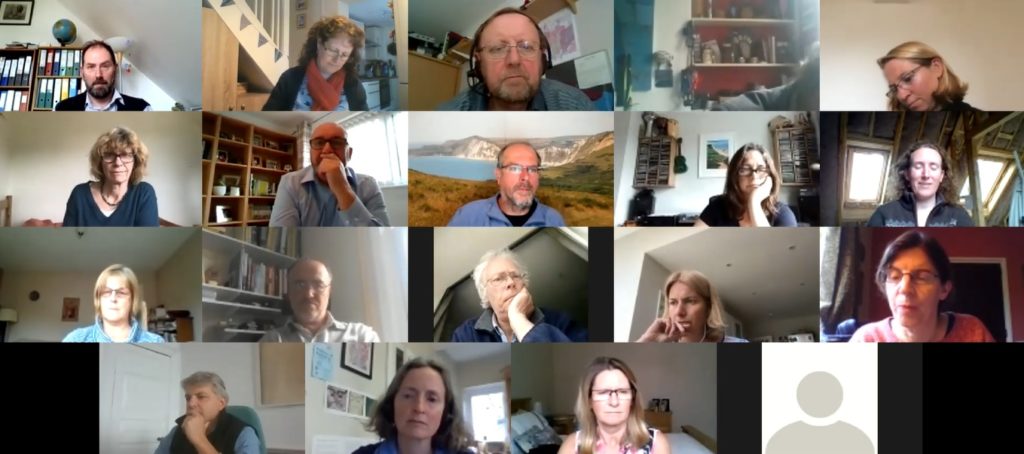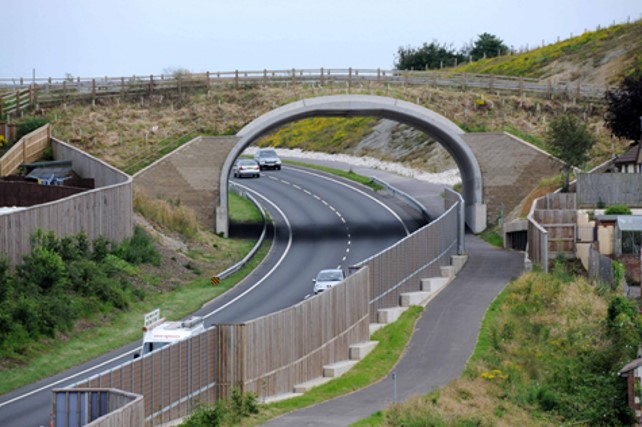Ian Alexander – Natural England
I’m not imagining the day when I’ll pay a virtual visit to my barber but for many businesses Covid-19 has forced them to rethink how their staff work and, for some, the answer has been ‘from home’.
Change is predominantly driven when better technology drives out the old. The Stone Age didn’t end because we ran out of stones. We’ve not nearly eliminated coal as a fuel for electricity generation through regulation (although that has helped), but because technical advances and consequent cost reductions mean that renewable energy sources are now cost competitive as well as ‘cleaner’. A solution can though be there staring us in the face yet cultural barriers can still prevent us from adopting it.

The technical ability to allow many people to work from home has been creeping upon us for a couple of decades now – the internet, broadband, superfast broadband and now fibre to property. 3G, 4G, 5G, tele conferences and video conferences. Covid-19 has just been the emergency that forced many firms to test the limits of that technology.
There are a series of fears that haunt employers at the thought of homeworking. Perhaps the most pervasive is trust – the thought that if the employee isn’t visible to their supervisors they will tend to skive, put in less than a full day or be less motivated. In an office environment many appreciate the ability to just wander over to someone to share an insight or discuss an idea. That dynamic changes when people work from home.
There are also fears for employees; that they will miss out on the camaraderie and social interaction that comes from being in an office environment, that they may have difficulty separating home life from work if both are happening in the same physical space and, for some people, that their home environment might be unsuitable to double up as an office.
For both groups we should recognise some well-founded risks, to mental health from isolation, and physical wellbeing from poor workstation ergonomics in a less closely supervised home office environment.
In truth many of these fears have well understood solutions. My own experience mirrors the widely reported experience of many employers – for the right employees productivity increases when they work from home, work life balance improves (partly as a result of losing the commute), and with some adjustment on both sides homeworking can be a positive experience.

But some staff will be ill suited to being homeworkers. True. When I started work many of us were ‘ill suited’ to being typists. It is probably difficult for anyone under 40 to appreciate but in my lifetime most technical / professional / managerial staff never had cause to touch a keyboard. Even small outfits had professional typists whose job it was to convert rough handwritten notes or dictation into the finished product. Anyone seen a typist recently? We evolve.
A trend to more homeworking isn’t taking place in isolation of course. No one who watches the news, or the statistics, can have missed the rise of on-line retailing and the decline of the ‘high street’. If we seize this opportunity what might the future look like – what could we have to gain?

For my entire career there has been an underlying tension between business advocates seeking ‘better transport links’ for Dorset and environmentalists who point out the value of the habitats that those new roads will, inevitably, destroy and fragment. What if we reduced the demand for road transport, particularly commuting, so that the existing infrastructure could cope? Building new roads is expensive and, as the state of many local roads testifies, maintaining them once built is an increasing financial challenge. Now consider this alongside the brownfield sites that could be freed up for new residential use as the combined decline in high street retailing and demand for centralised office space kicks in.
Remember that there are carbon savings to be made here as well. Even a car commute of a few miles (diesel / petrol) will be using more fossil fuel energy that heating your home office for a day. As we try to head for net zero this one looks like low hanging fruit.
Can we, should we, be starting to reimagine how we structure our built environment to better exploit the opportunities of the new technology. It seems to me that the answer to that is obvious but to make the best start on that journey we will need to provide training for both employers and employees in making the best use of the new technology and opportunities. That cost however will be a tiny fraction of the cost of building the new transport infrastructure that we are now going to render redundant. Rolling out superfast to Dorset was the last expensive step in this process of transition. We now look to the LEP to complete the change by investing in the advocacy and training needed to utilise this infrastructure to deliver a more efficient, sustained, cost-effective working environment for Dorset.
